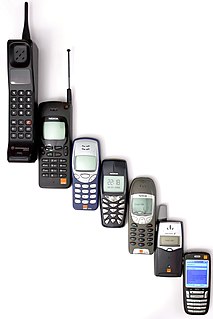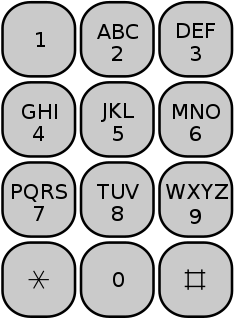| Compatible networks | CDMA Dual Band 800/1900 |
|---|---|
| Form factor | Clamshell |
| Dimensions | 99 × 44 × 18.1 mm (3.9 × 1.8 × 0.71 inches) |
| Weight | 110 g |
| Memory | 37 MB |
| Battery | 950 mAh Li-ion |
| Display | Internal: 128 × 160 pixel TFT LCD, 65,536 colors External: CLI, 96 × 32 pixels |
| Connectivity | CE Bus - USB, Bluetooth |
The W385 is a mobile phone model produced by Motorola.

A mobile phone, cell phone, cellphone, or hand phone, sometimes shortened to simply mobile, cell or just phone, is a portable telephone that can make and receive calls over a radio frequency link while the user is moving within a telephone service area. The radio frequency link establishes a connection to the switching systems of a mobile phone operator, which provides access to the public switched telephone network (PSTN). Modern mobile telephone services use a cellular network architecture, and, therefore, mobile telephones are called cellular telephones or cell phones, in North America. In addition to telephony, 2000s-era mobile phones support a variety of other services, such as text messaging, MMS, email, Internet access, short-range wireless communications, business applications, video games, and digital photography. Mobile phones offering only those capabilities are known as feature phones; mobile phones which offer greatly advanced computing capabilities are referred to as smartphones.
Motorola, Inc. was an American multinational telecommunications company founded on September 25, 1928, based in Schaumburg, Illinois. After having lost $4.3 billion from 2007 to 2009, the company was divided into two independent public companies, Motorola Mobility and Motorola Solutions on January 4, 2011. Motorola Solutions is generally considered to be the direct successor to Motorola, as the reorganization was structured with Motorola Mobility being spun off. Motorola Mobility was sold to Google in 2012, and acquired by Lenovo in 2014.

